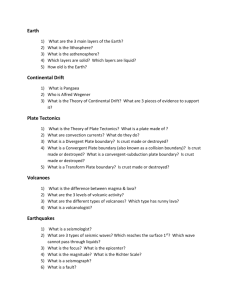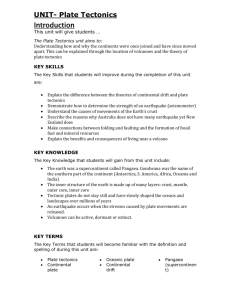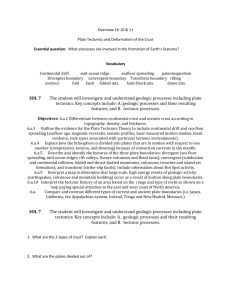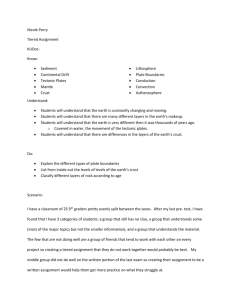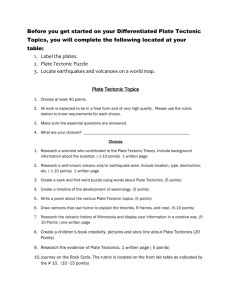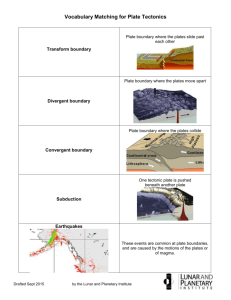Study-Guide-Need-to-Know-for-Unit-2-Earth-Layers
advertisement
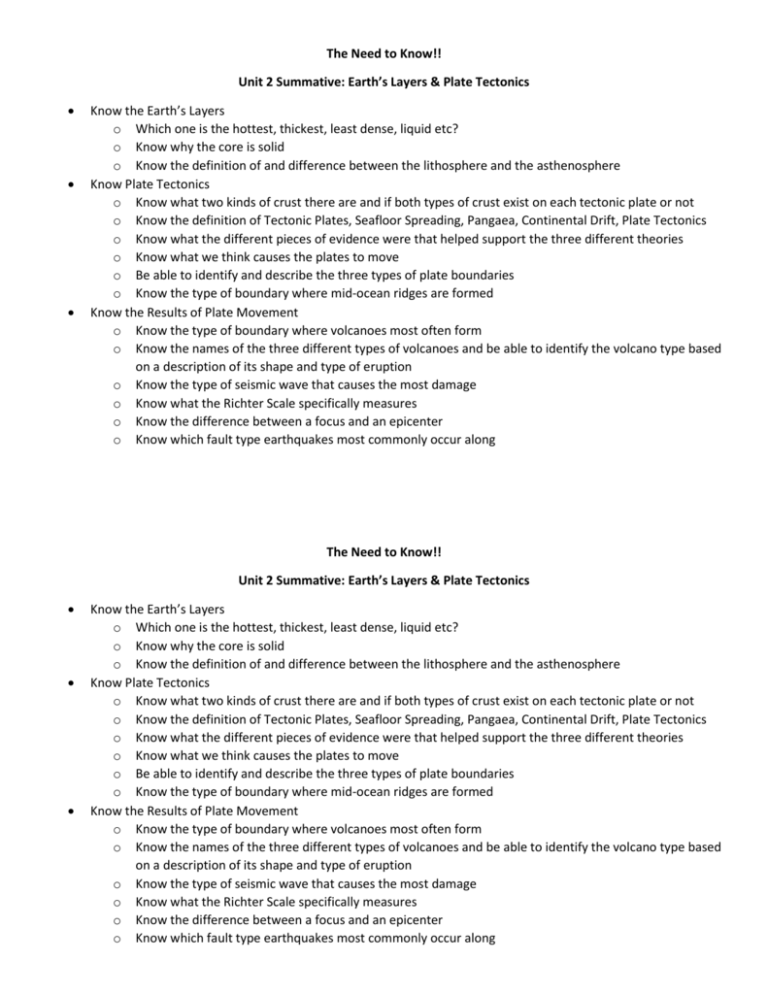
The Need to Know!! Unit 2 Summative: Earth’s Layers & Plate Tectonics Know the Earth’s Layers o Which one is the hottest, thickest, least dense, liquid etc? o Know why the core is solid o Know the definition of and difference between the lithosphere and the asthenosphere Know Plate Tectonics o Know what two kinds of crust there are and if both types of crust exist on each tectonic plate or not o Know the definition of Tectonic Plates, Seafloor Spreading, Pangaea, Continental Drift, Plate Tectonics o Know what the different pieces of evidence were that helped support the three different theories o Know what we think causes the plates to move o Be able to identify and describe the three types of plate boundaries o Know the type of boundary where mid-ocean ridges are formed Know the Results of Plate Movement o Know the type of boundary where volcanoes most often form o Know the names of the three different types of volcanoes and be able to identify the volcano type based on a description of its shape and type of eruption o Know the type of seismic wave that causes the most damage o Know what the Richter Scale specifically measures o Know the difference between a focus and an epicenter o Know which fault type earthquakes most commonly occur along The Need to Know!! Unit 2 Summative: Earth’s Layers & Plate Tectonics Know the Earth’s Layers o Which one is the hottest, thickest, least dense, liquid etc? o Know why the core is solid o Know the definition of and difference between the lithosphere and the asthenosphere Know Plate Tectonics o Know what two kinds of crust there are and if both types of crust exist on each tectonic plate or not o Know the definition of Tectonic Plates, Seafloor Spreading, Pangaea, Continental Drift, Plate Tectonics o Know what the different pieces of evidence were that helped support the three different theories o Know what we think causes the plates to move o Be able to identify and describe the three types of plate boundaries o Know the type of boundary where mid-ocean ridges are formed Know the Results of Plate Movement o Know the type of boundary where volcanoes most often form o Know the names of the three different types of volcanoes and be able to identify the volcano type based on a description of its shape and type of eruption o Know the type of seismic wave that causes the most damage o Know what the Richter Scale specifically measures o Know the difference between a focus and an epicenter o Know which fault type earthquakes most commonly occur along

